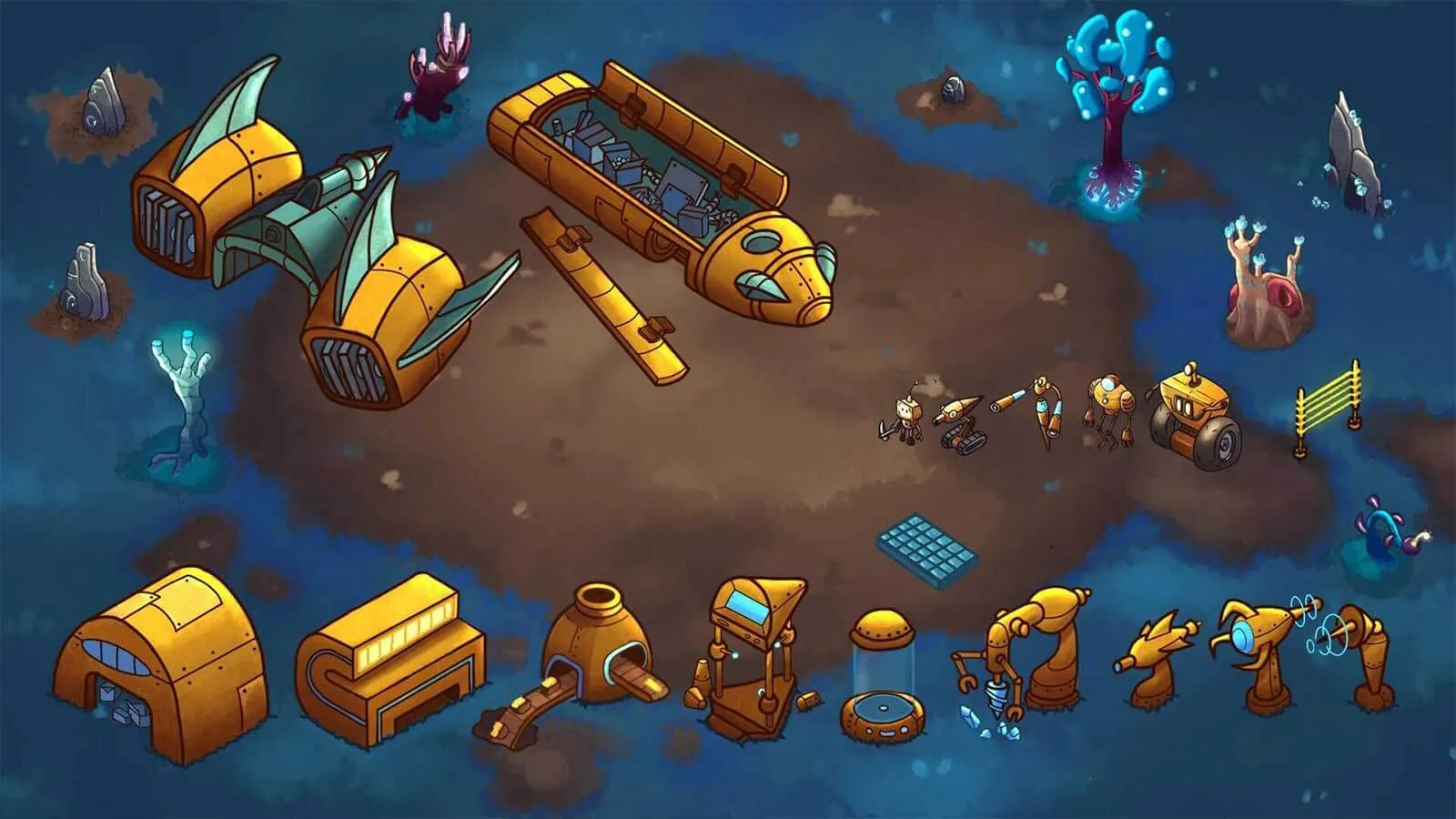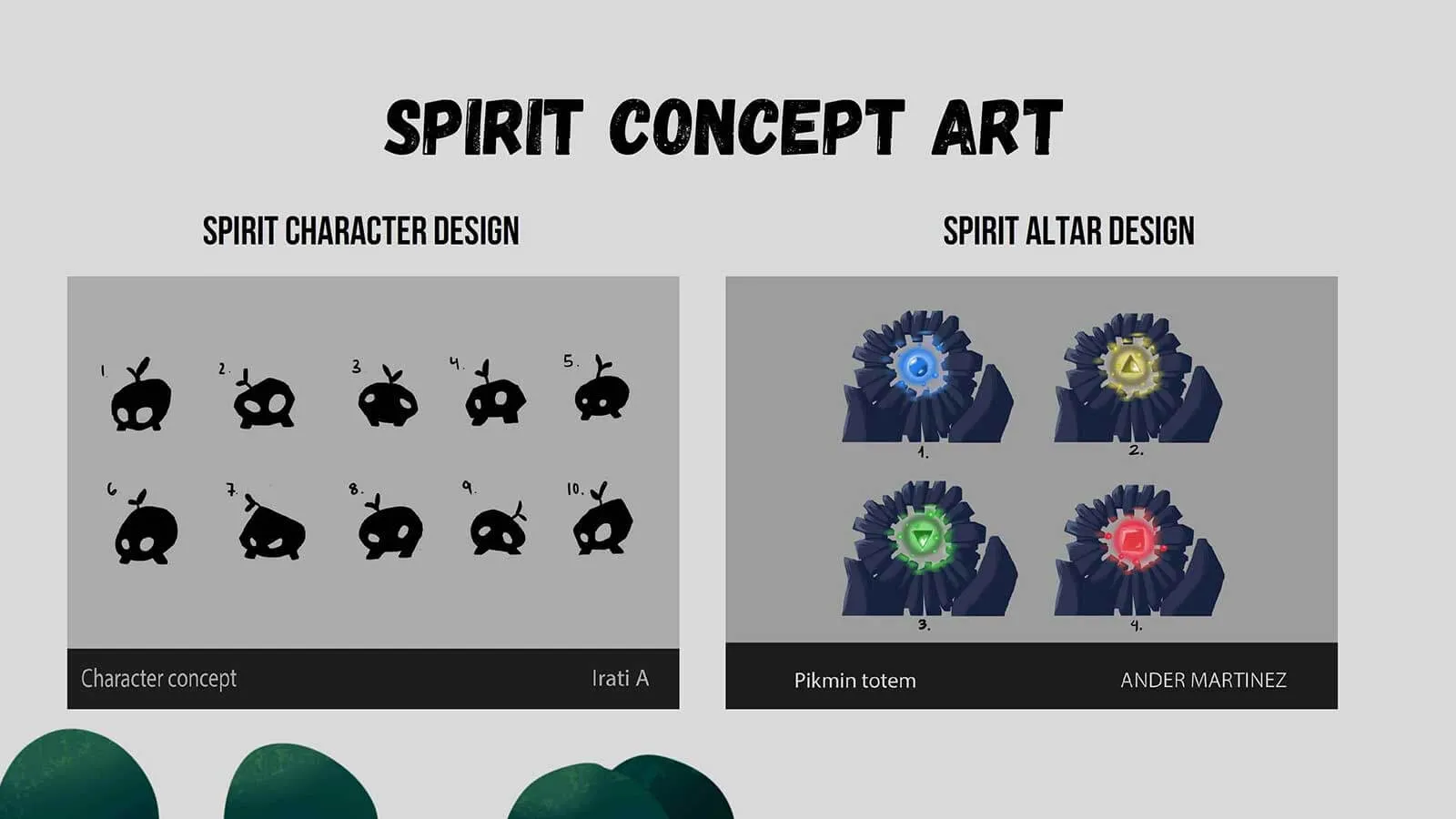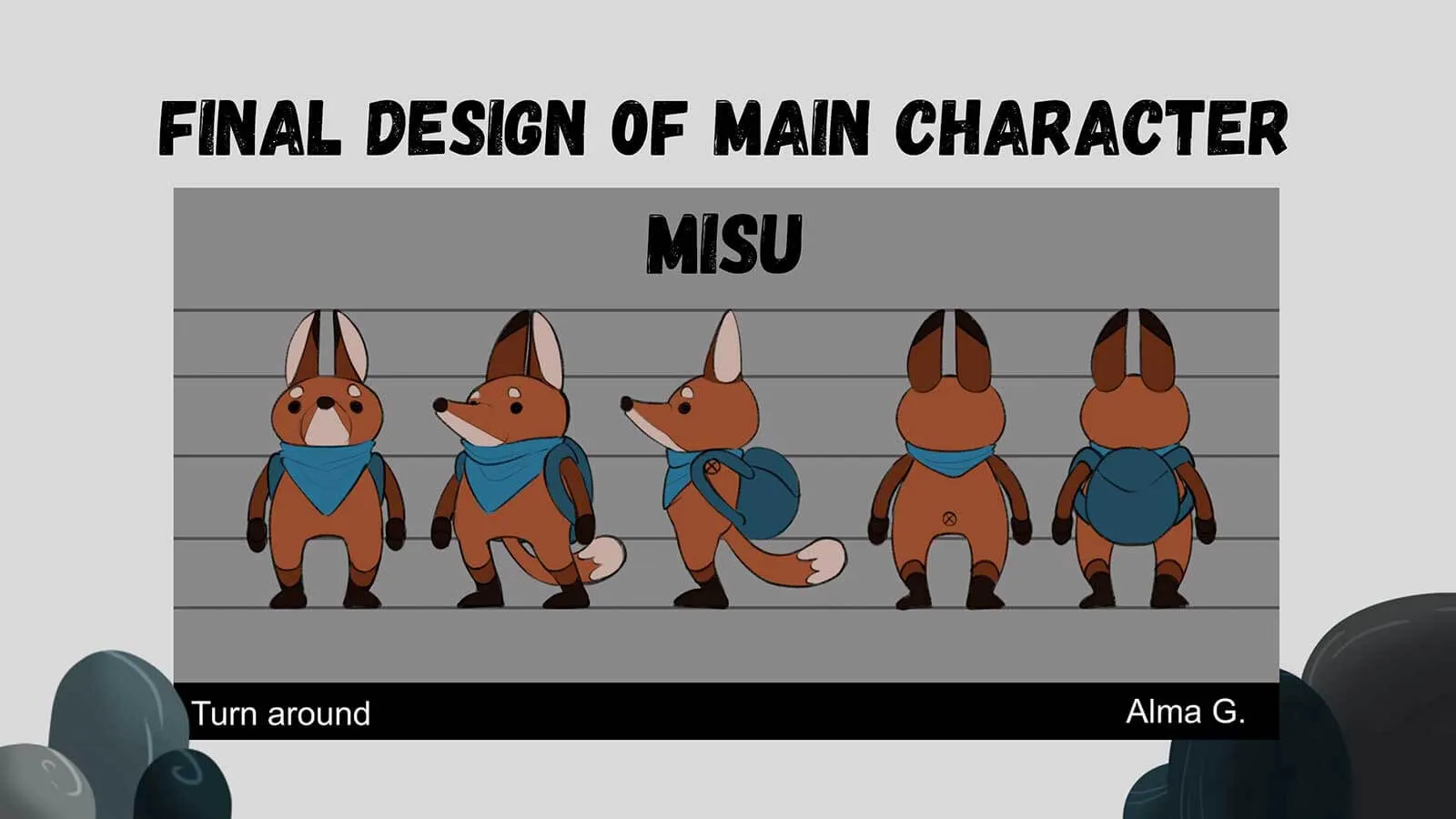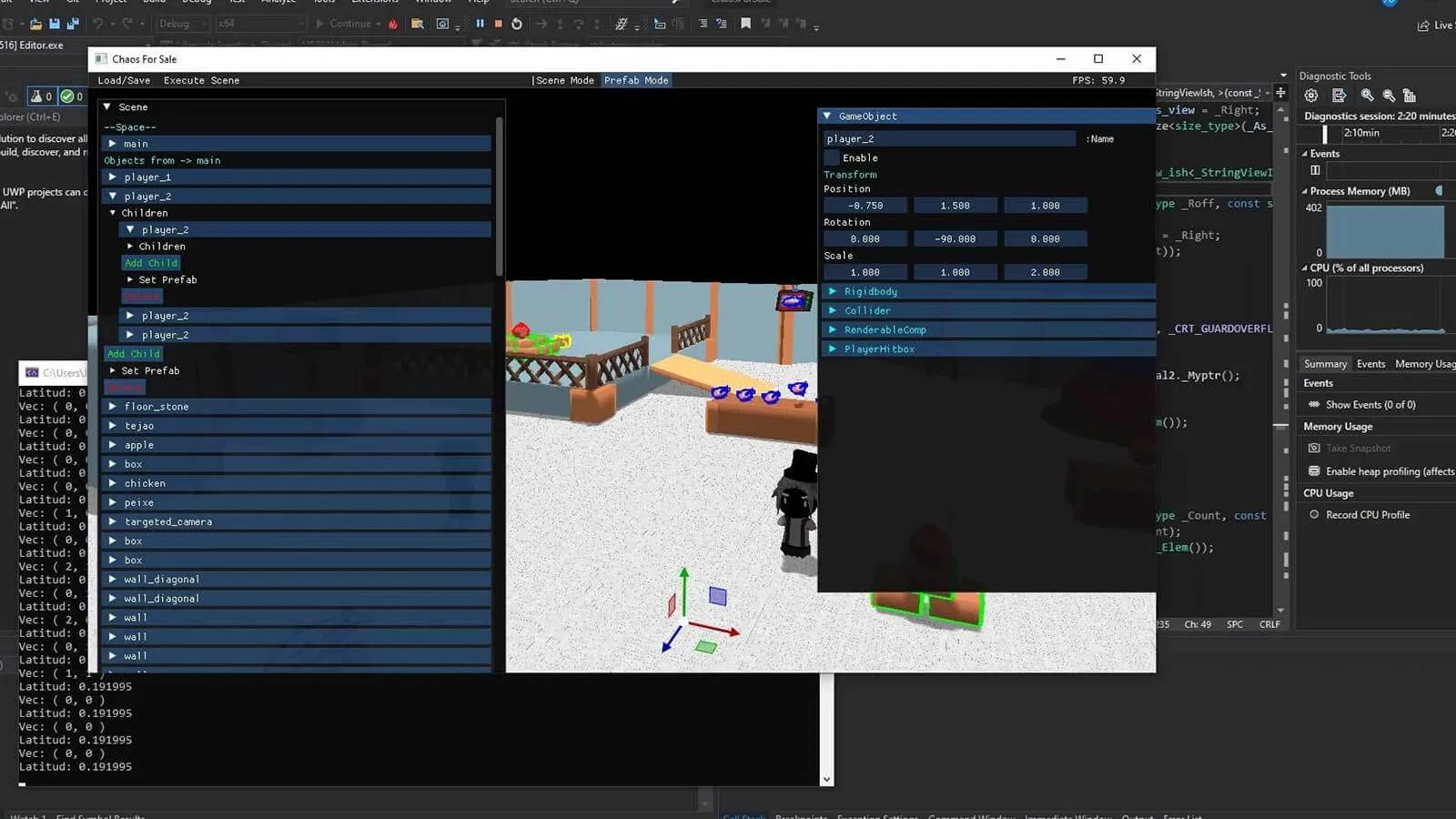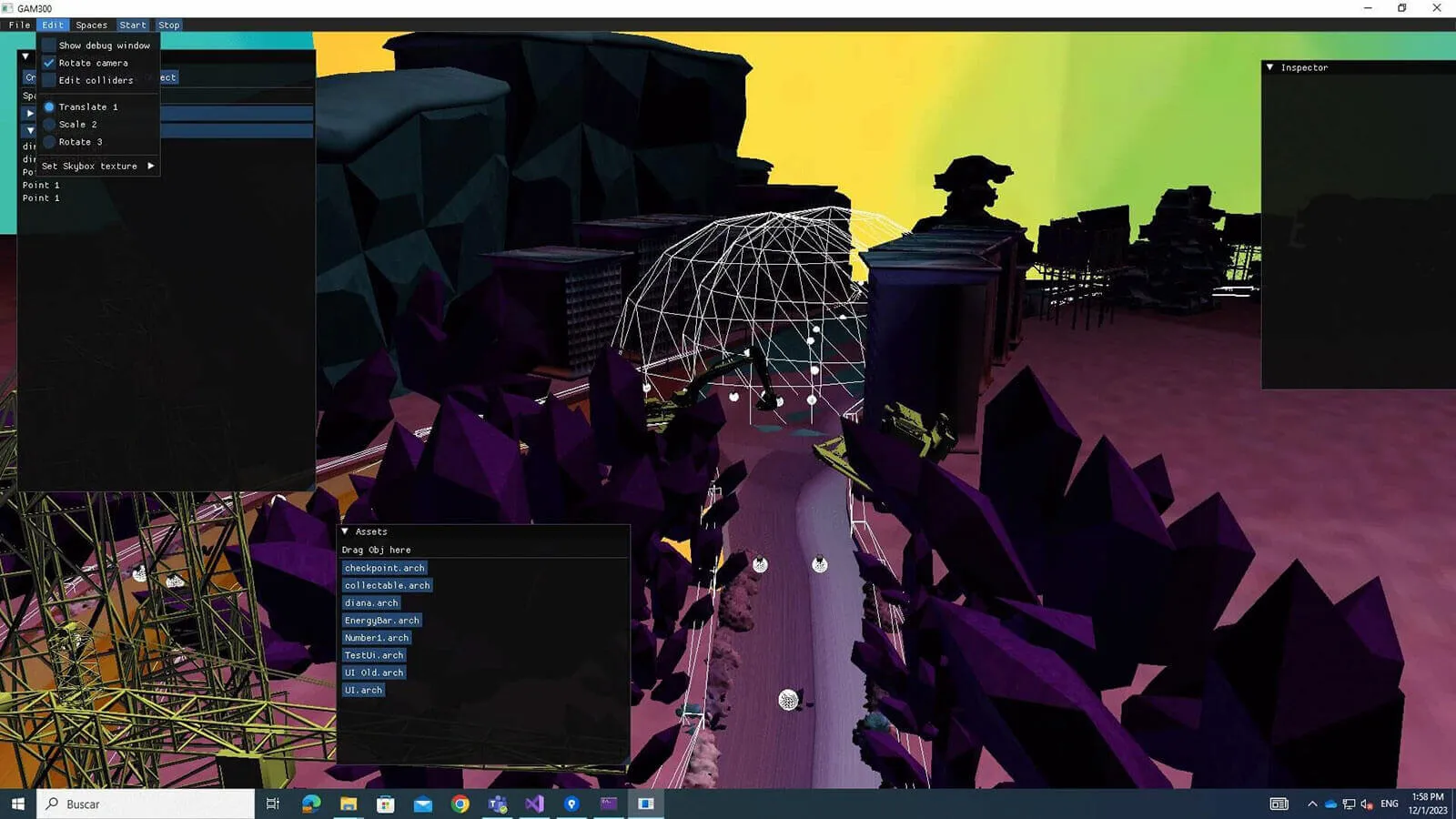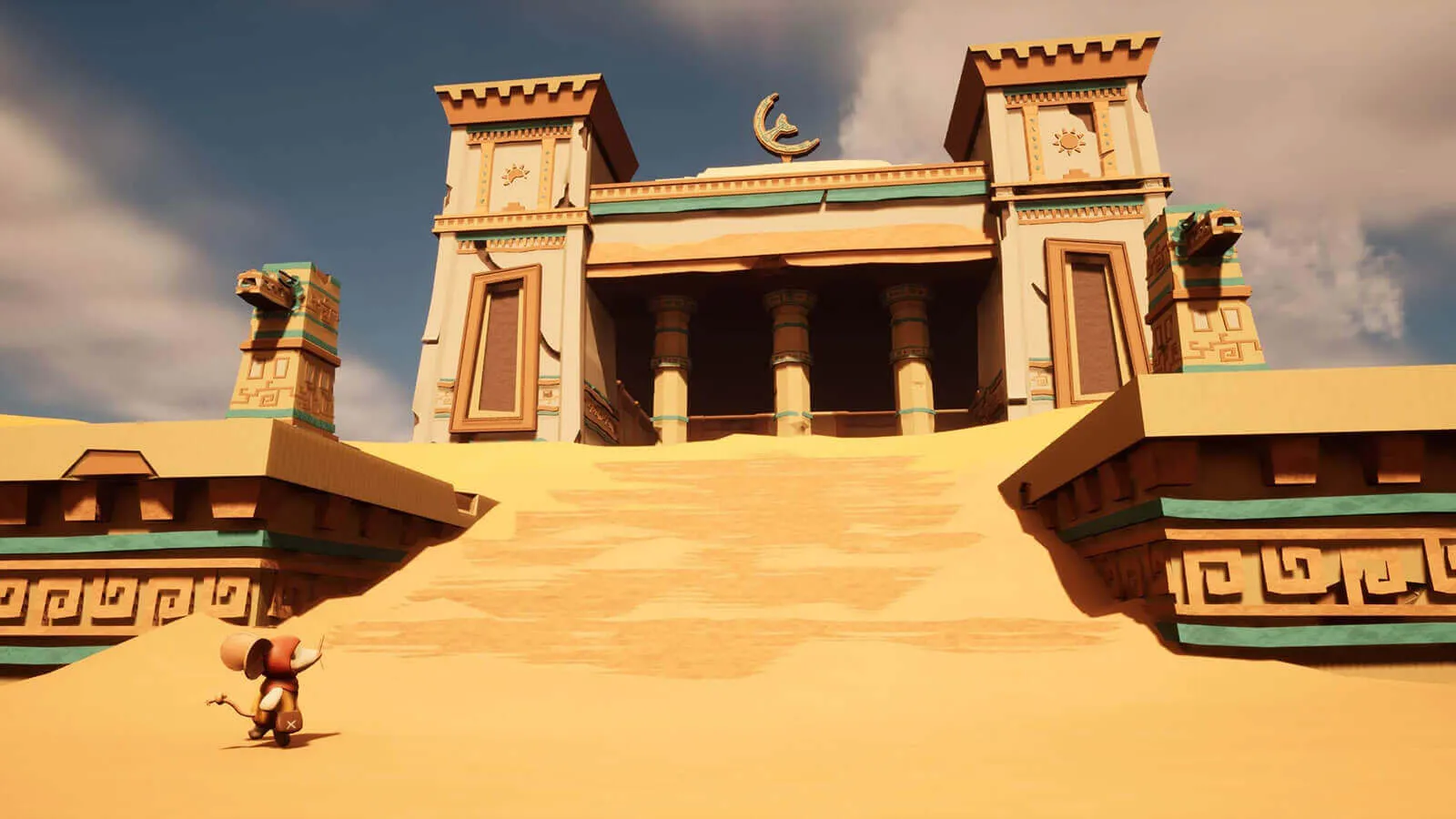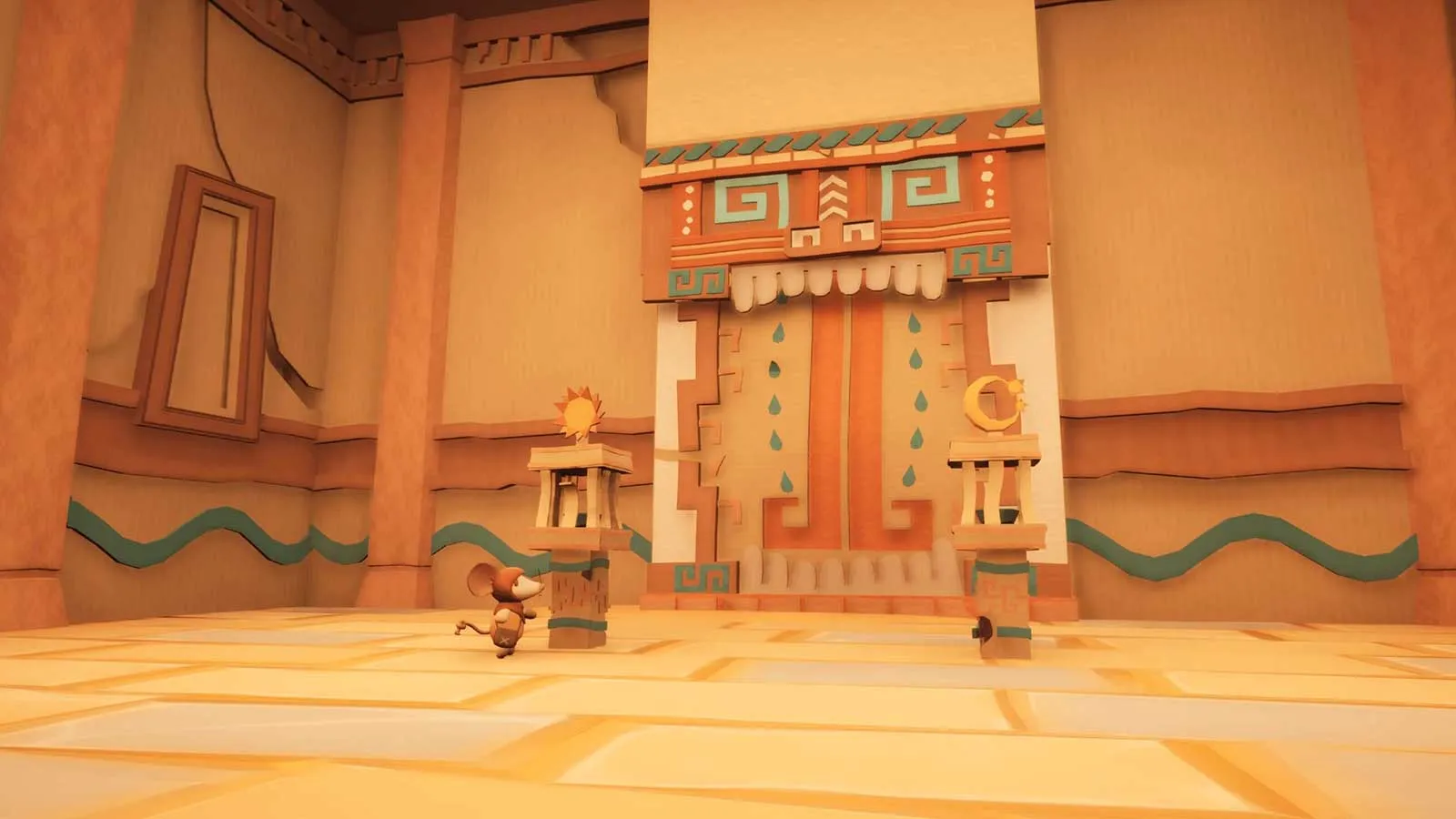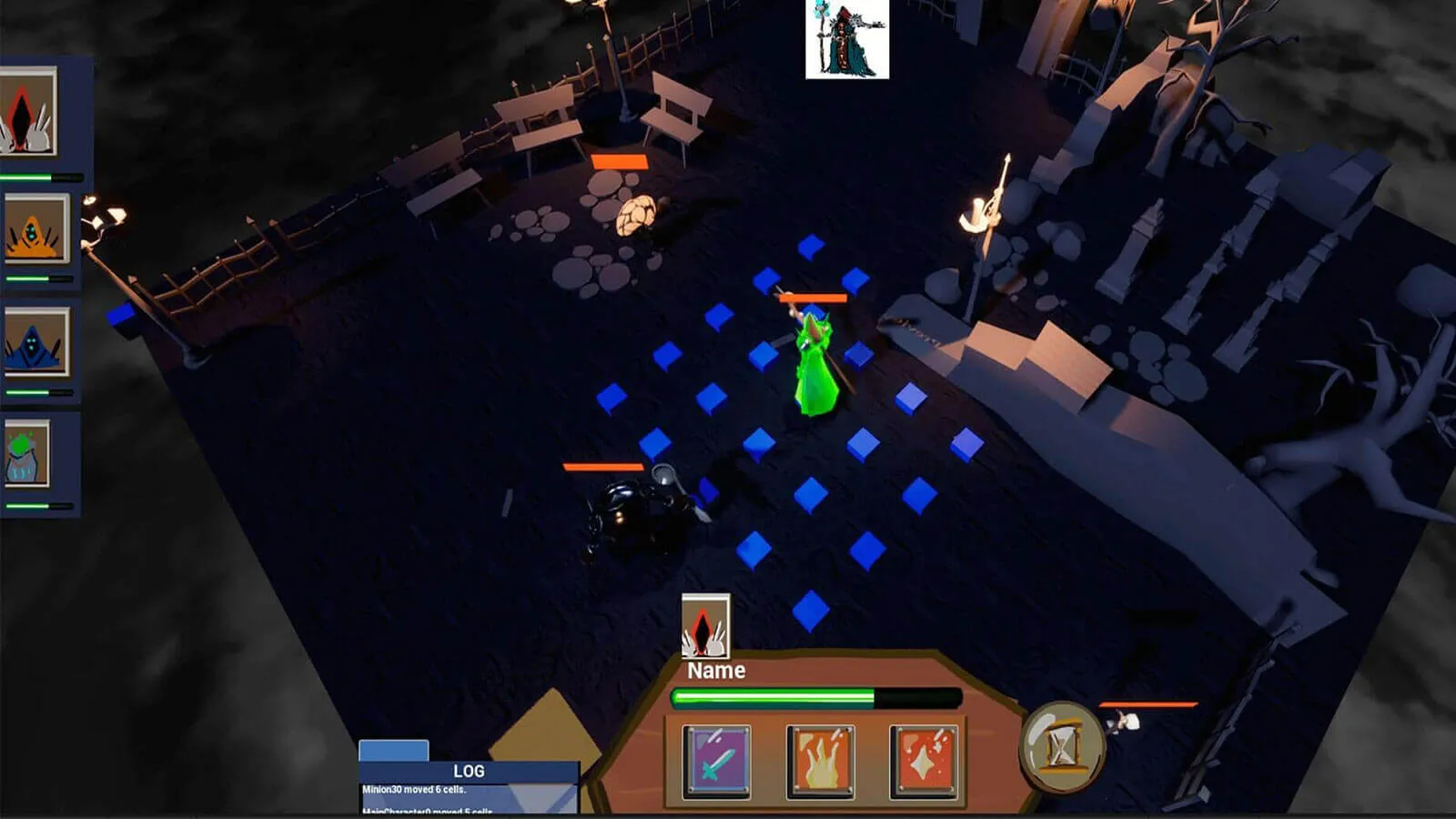The anticipation and excitement game developers experience when presenting their game is a moment unlike any other, and that’s what students at DigiPen Europe-Bilbao felt when they participated in the annual vertical slice presentation on December 15. After months of collaborative work, student game teams enthusiastically presented their projects in a visually pleasing and functioning state for the first time.
This highly anticipated event provided a unique opportunity for budding game developers to unveil what they’ve been working on in within the Bachelor of Science in Computer Science in Real-Time Interactive Simulation and the Bachelor of Fine Arts in Digital Art and Animation degree programs. The presentations offered a sneak peek into the innovative world of game development, showcasing the creativity that will culminate in fully-fledged games set to be published this upcoming May.
This year’s game lineup unveiled a mesmerizing array of genres, such as the captivating worlds of real-time survival strategy, adventurous platforming, and exhilarating multiplayer racing.
What Is a Vertical Slice?
A vertical slice in game development refers to a fully realized portion of a game that includes elements from all its facets, giving everyone involved a comprehensive view of the final product’s potential. At DigiPen Europe-Bilbao, these presentations are a crucial milestone for students, marking the transition from conceptualization to tangible, playable experiences.
It all starts with an engine proof followed by a prototype presentation, then comes the vertical slice. Development continues with a first playable demo, an alpha, a beta, and finally going gold. This cycle allows students to navigate a journey of ideation, collaborative development, and iterative refinement alongside their instructors.
Game and Class Expectations
Symbiotic work across disciplines is what makes projects shine. To that end, each class entails its own complexities and responsibilities. For instance, students in GAM 200 and GAM 300 are engaged in the meticulous process of constructing their game engines from scratch, employing C++ and various libraries. Over the past few months, they dedicated their efforts to coding the physics, graphics, animation systems, and the editor, among other components. Additionally, the technology developed by GAM 200 students lends support to artists in PRJ 202 who integrate 2D assets into the game, having previously animated them with Spine.
GAM 400 and PRJ 402 students confront the formidable challenge of Unreal Engine 5, a globally recognized engine celebrated for its multifaceted capabilities. Acquiring proficiency in this tool demands a specific skill set, one that prepares them to enter full-production mode for the upcoming spring semester.
In contrast, GAM 100 projects deviate from this norm, constituting semester-long endeavors initiated this past fall semester. Students dedicated ten weeks to working on Unity, culminating in the development of a final playable product.
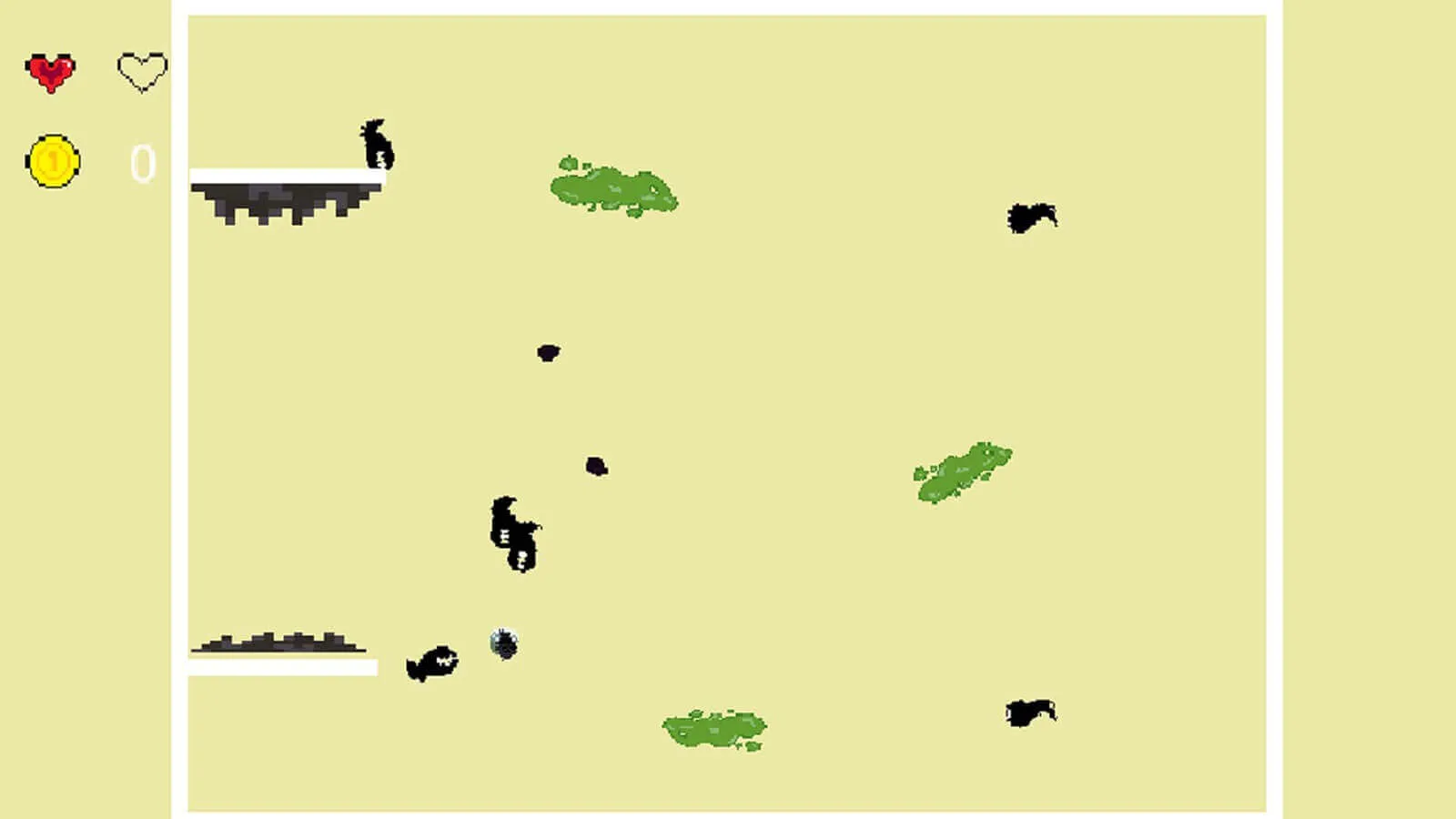
See our Anatomy of a Game Team article series for in-depth exploration of each year in a student game team’s development.
Upcoming Student Games and High Concepts
Students team up to bring their visions to life by taking on roles across various disciplines, including programming, art, music and sound design, game design, and production. Vertical slice presentations serve as a platform for these interdisciplinary teams to share their progress with peers, faculty, and staff, fostering an environment of collaboration and feedback.
For the 2023-24 academic year, several student game teams participated in the vertical slice presentation. Each game project is still in development and pending multiple iterations. All content is subject to change in the future.
| Game Details | High Concept |
|---|---|
HandlessGame Team: Handicapped Studios Courses: GAM 100 | Top-down shooter with bullet hell gameplay. Collect money to upgrade life and weapons. Manage bullets to survive waves. |
Lost IslandGame Team: Pixel Office Courses: GAM 100 | 2D side-scrolling platformer with extreme conditions and enemies. Find the hidden island treasure using weapons and power-ups across levels. |
Sword of DestinyGame Team: Sofni Studios Courses: GAM 100 | 2D side-scrolling Metroidvania. Explore maps, defeat enemies, and free Frenic’s people from a dark wizard’s control. |
Tree of DoomGame Team: Chicxel’s Lab Courses: GAM 100 | Top-down roguelike fantasy action RPG. Level up, explore dungeons, shop upgrades and abilities, and face a final boss. |
Wildhaven WoodsGame Team: Caffeine Productions Courses: GAM 100 | Top-down procedurally generated roguelike with combat and puzzles. Choose a character, navigate stages, and upgrade through an election system after each level. |
Stellar VeinsGame Team: Bigotters Courses: GAM 200, PRJ 202 | Real-time survival strategy in a 2D isometric view. On a hostile planet, create a new home for a robot civilization on the brink of extinction. |
Zima PolarisGame Team: Mousetrap Studios Courses: GAM 200, PRJ 202 | Adventure puzzle-solving platformer. Climb a mountain using a hook and seek the aid of mountain spirits to fulfill the character’s wish. |
Chaos 4 SaleGame Team: POG Studios Courses: GAM 300 | A single player or cooperative 3D isometric view arcade game set in a supermarket. Deliver requested products in time, using punches, kicks, and throws. |
CrashNBurnGame Team: Psycho Party Courses: GAM 300 | Multiplayer racing game where players aim to destroy opponents until the last one remains standing. |
Chrono ClubGame Team: DigiPals Motoworks Courses: GAM 400, PRJ 402 | Multi-era tournament features racers from past, present, and future. Compete for gold, hinder opponents using energy and items for victory. |
MouseVenturesGame Team: Fondue Games Courses: GAM 400, PRJ 402 | Puzzle-adventure third-person game with a stuffed mouse protagonist. Dive into the owner’s books, interact with characters, and solve puzzles to complete each tale’s happy ending. |
Slap ThatGame Team: Slap Us Courses: GAM 400, PRJ 402 | Chaotic first-person “slapper.” Navigate through enemies and obstacles, creating a path by slapping them to progress. |
AbyssalGame Team: Team Strategy Courses: GAM 400, PRJ 402 | Turn-based strategy. Guide a medieval monk and command minions in battles against hordes of monstrous enemies for survival. |
Preparing for Publication
With the spring semester on the horizon, the final step of game completion is easier said than done. Armed with valuable feedback and a clearer understanding of their project’s strengths and risks, students will approach the upcoming months with renewed energy and purpose. The focus will be on refining and polishing their games for the final release.
Elsewhere, first-year students will engage in a new project within GAM 150, utilizing an internally developed 2D C-based bare-bones engine. This experience aims to familiarize them with continuing to work closely with technology, emphasizing a hands-on approach over reliance on user interfaces.
How do you stay up to date on these new game projects and concepts? Keep an eye on social media for updates as we eagerly anticipate the release of these game projects in May.


